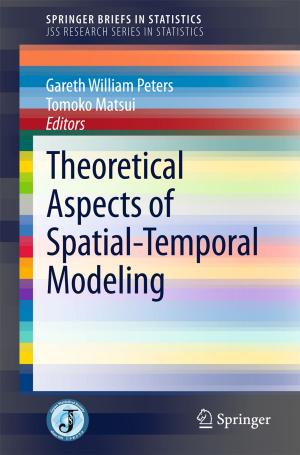Camera Traps in Animal Ecology
Methods and Analyses
Nonfiction, Science & Nature, Science, Biological Sciences, Zoology| Author: | ISBN: | 9784431994954 | |
| Publisher: | Springer Japan | Publication: | October 5, 2010 |
| Imprint: | Springer | Language: | English |
| Author: | |
| ISBN: | 9784431994954 |
| Publisher: | Springer Japan |
| Publication: | October 5, 2010 |
| Imprint: | Springer |
| Language: | English |
Remote photography and infrared sensors are widely used in the sampling of wildlife populations worldwide, especially for cryptic or elusive species. Guiding the practitioner through the entire process of using camera traps, this book is the first to compile state-of-the-art sampling techniques for the purpose of conducting high-quality science or effective management. Chapters on the evaluation of equipment, field sampling designs, and data analysis methods provide a coherent framework for making inferences about the abundance, species richness, and occupancy of sampled animals. The volume introduces new models that will revolutionize use of camera data to estimate population density, such as the newly developed spatial capture–recapture models. It also includes richly detailed case studies of camera trap work on some of the world’s most charismatic, elusive, and endangered wildlife species. Indispensible to wildlife conservationists, ecologists, biologists, and conservation agencies around the world, the text provides a thorough review of the subject as well as a forecast for the use of remote photography in natural resource conservation over the next few decades.
Remote photography and infrared sensors are widely used in the sampling of wildlife populations worldwide, especially for cryptic or elusive species. Guiding the practitioner through the entire process of using camera traps, this book is the first to compile state-of-the-art sampling techniques for the purpose of conducting high-quality science or effective management. Chapters on the evaluation of equipment, field sampling designs, and data analysis methods provide a coherent framework for making inferences about the abundance, species richness, and occupancy of sampled animals. The volume introduces new models that will revolutionize use of camera data to estimate population density, such as the newly developed spatial capture–recapture models. It also includes richly detailed case studies of camera trap work on some of the world’s most charismatic, elusive, and endangered wildlife species. Indispensible to wildlife conservationists, ecologists, biologists, and conservation agencies around the world, the text provides a thorough review of the subject as well as a forecast for the use of remote photography in natural resource conservation over the next few decades.















